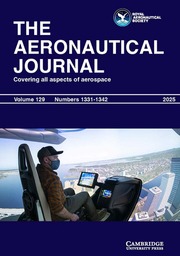No CrossRef data available.
Article contents
A machine learning analysis of the impact of helideck surface conditions on helicopter safety
Published online by Cambridge University Press: 29 July 2025
Abstract
This study provides a comprehensive analysis of the impact of helideck surface conditions on the safe operation of helicopter landing and take-off platforms on offshore drilling vessels. Over time, the deterioration of helideck surface coatings necessitates periodic friction coefficient testing every two years in compliance with international standards. Surface coatings that fail to meet the required thresholds are replaced, and the performance of the renewed surface is reassessed using the Helideck Micro GripTester (HMGT), in accordance with U.K. Safety Regulation Group CAP 437 (2023) standards for offshore helicopter landing areas. The findings indicate that the renewed helideck surface coatings lead to a significant increase in the coefficient of friction, thereby enhancing the stability of helicopters upon landing and while on deck. Independent sample t-test and correlation analyses confirmed statistically significant differences between the old and new surface conditions, demonstrating the positive impact of surface improvements on coefficient of friction and, therefore, operational safety. Furthermore, machine learning techniques were employed to model and analyse the non-linear relationships between surface conditions and flow number. The model results demonstrate that variations in helideck surface coatings directly influence helicopter performance and operational safety. These findings underscore the critical importance of regular resurfacing and friction testing in ensuring the safety and reliability of offshore helicopter operations.
Keywords
Information
- Type
- Research Article
- Information
- Copyright
- © The Author(s), 2025. Published by Cambridge University Press on behalf of Royal Aeronautical Society


